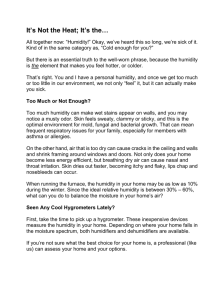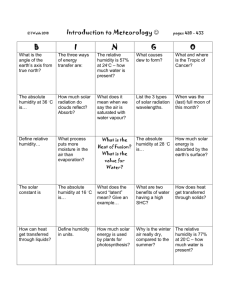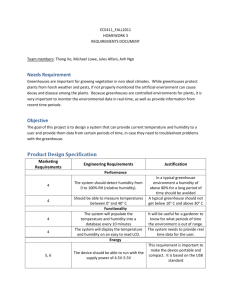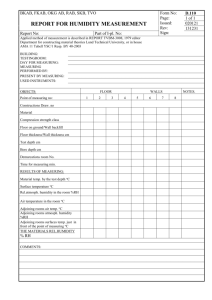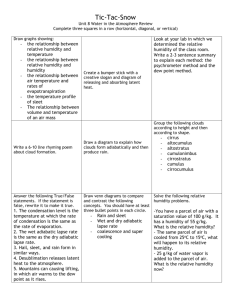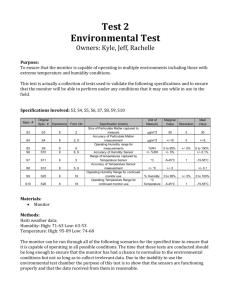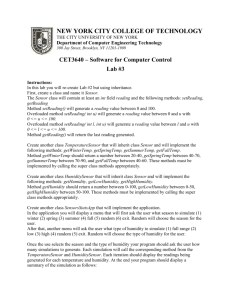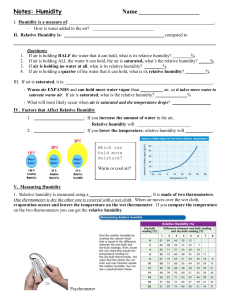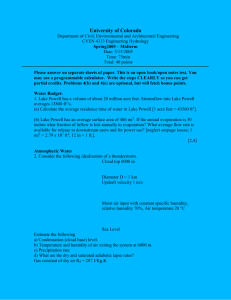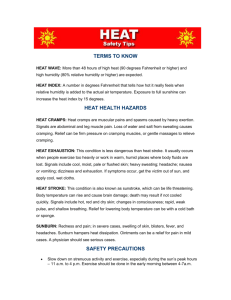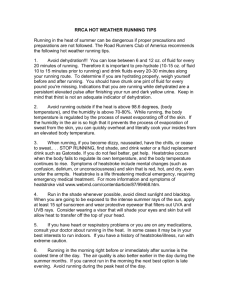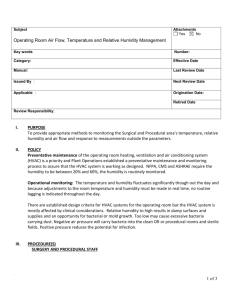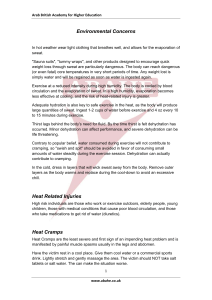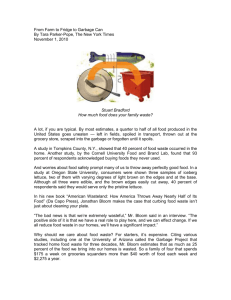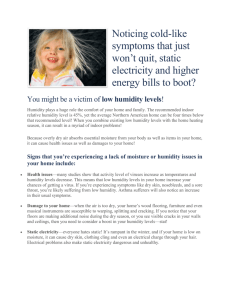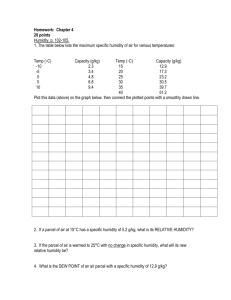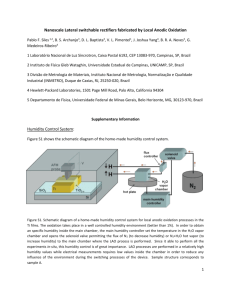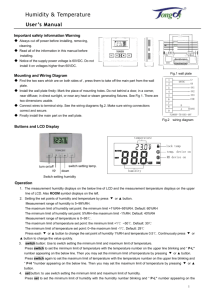Storage Primer
advertisement
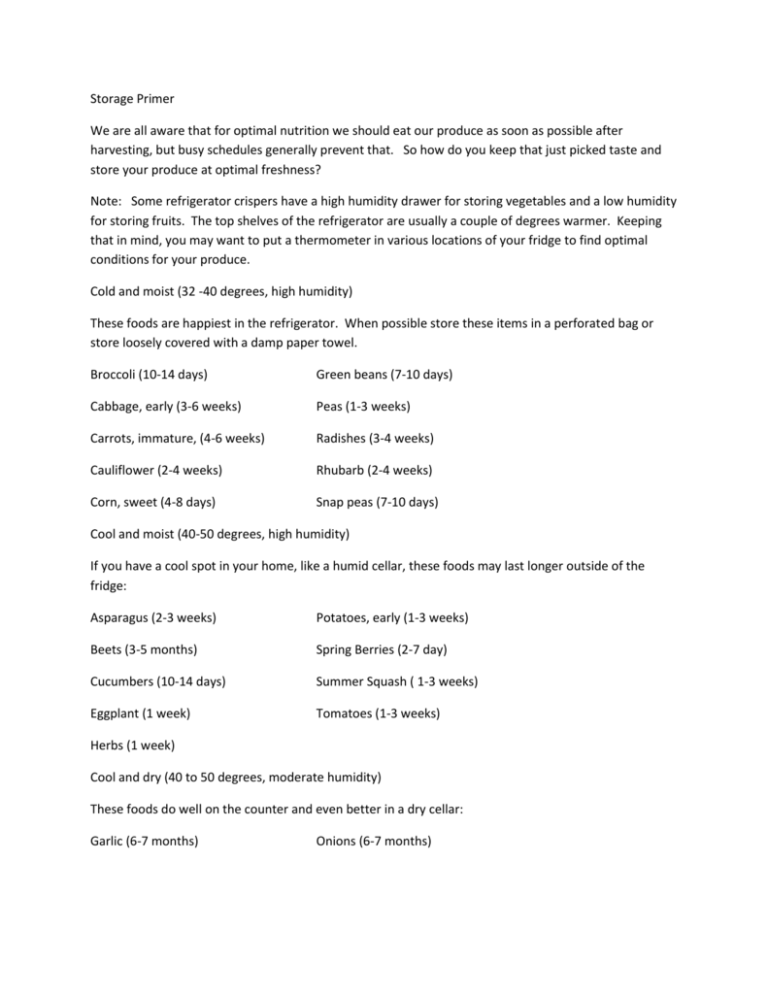
Storage Primer We are all aware that for optimal nutrition we should eat our produce as soon as possible after harvesting, but busy schedules generally prevent that. So how do you keep that just picked taste and store your produce at optimal freshness? Note: Some refrigerator crispers have a high humidity drawer for storing vegetables and a low humidity for storing fruits. The top shelves of the refrigerator are usually a couple of degrees warmer. Keeping that in mind, you may want to put a thermometer in various locations of your fridge to find optimal conditions for your produce. Cold and moist (32 -40 degrees, high humidity) These foods are happiest in the refrigerator. When possible store these items in a perforated bag or store loosely covered with a damp paper towel. Broccoli (10-14 days) Green beans (7-10 days) Cabbage, early (3-6 weeks) Peas (1-3 weeks) Carrots, immature, (4-6 weeks) Radishes (3-4 weeks) Cauliflower (2-4 weeks) Rhubarb (2-4 weeks) Corn, sweet (4-8 days) Snap peas (7-10 days) Cool and moist (40-50 degrees, high humidity) If you have a cool spot in your home, like a humid cellar, these foods may last longer outside of the fridge: Asparagus (2-3 weeks) Potatoes, early (1-3 weeks) Beets (3-5 months) Spring Berries (2-7 day) Cucumbers (10-14 days) Summer Squash ( 1-3 weeks) Eggplant (1 week) Tomatoes (1-3 weeks) Herbs (1 week) Cool and dry (40 to 50 degrees, moderate humidity) These foods do well on the counter and even better in a dry cellar: Garlic (6-7 months) Onions (6-7 months)

